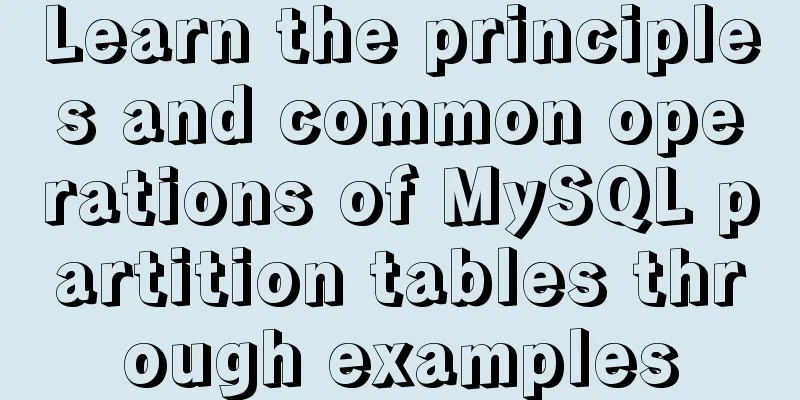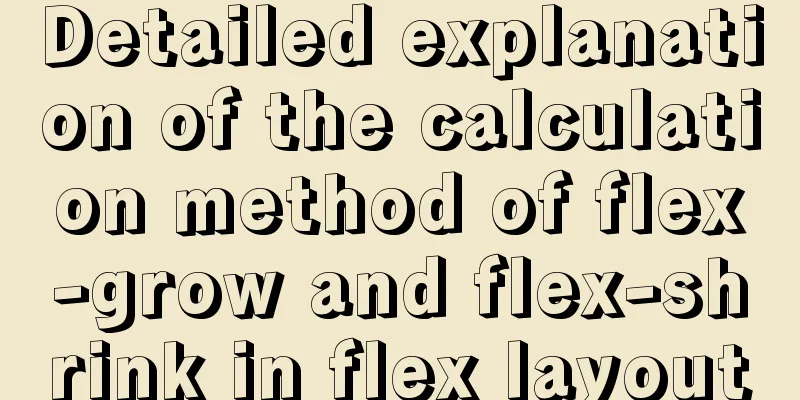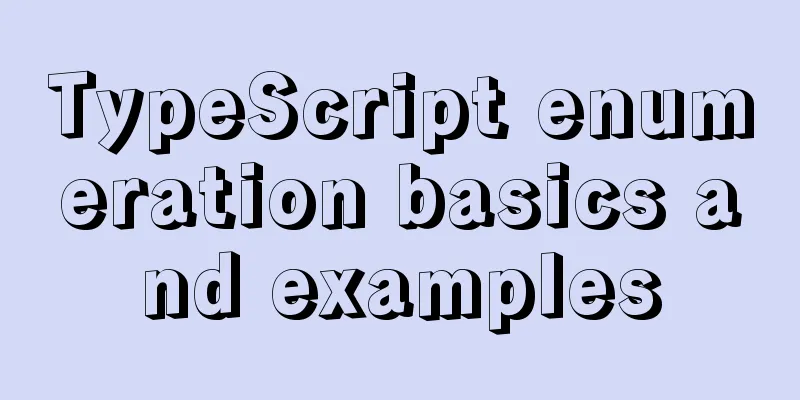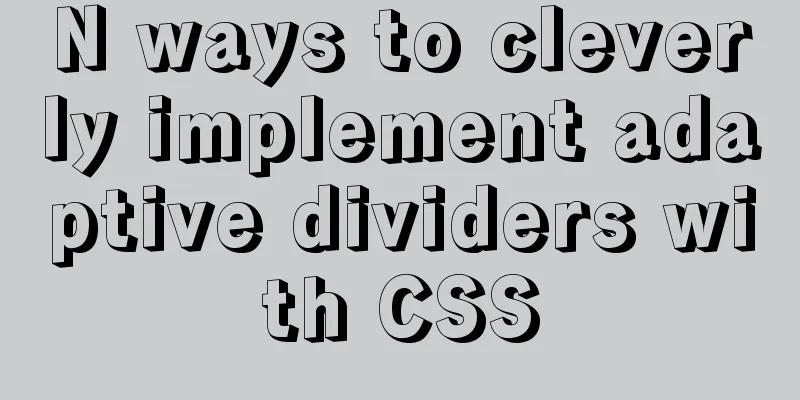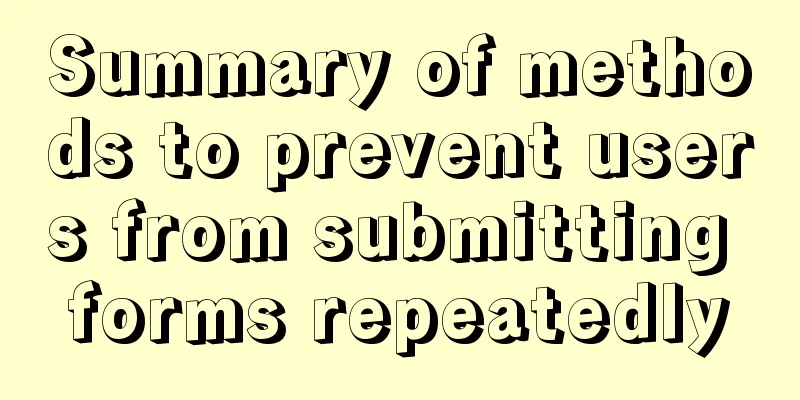Use SWFObject to perfectly solve the browser compatibility problem of inserting Flash into HTML
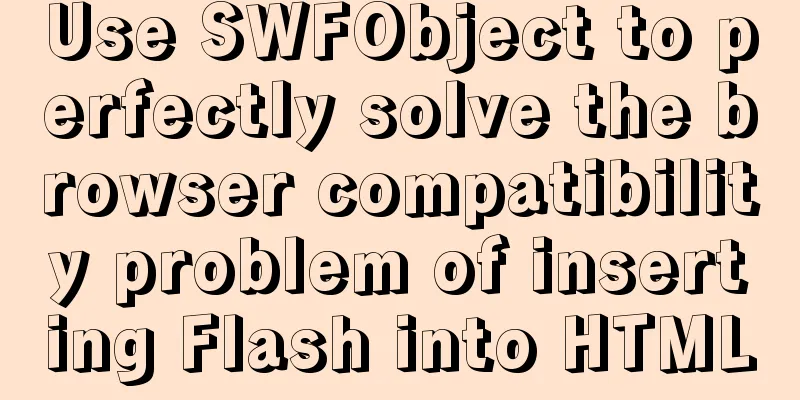
|
Let’s learn together 1. Traditional methods Copy code The code is as follows:<object classid="clsid:d27cdb6e-ae6d-11cf-96b8-444553540000"codebase="<a href="http://fpdownload.macromedia.com/pub/shockwave/cabs/flash/swflash.cab#version=7,0,0,0">http://fpdownload.macromedia.com/pub/shockwave/cabs/flash/swflash.cab#version=7,0,0,0</a>" width="550" height="400" id="Untitled-1" align="middle"> <param name="allowScriptAccess" value="sameDomain" /> <param name="movie" value="mymovie.swf" /> <param name="quality" value="high" /> <param name="bgcolor" value="#ffffff" /> <embed src="mymovie.swf" quality="high" bgcolor="#ffffff" width="550" height="400"name="mymovie" align="middle" allowScriptAccess="sameDomain" type="application/x-shockwave-flash" pluginspage="<a href="http://www.macromedia.com/go/getflashplayer">http://www.macromedia.com/go/getflashplayer</a>" /> </object> This method uses the object and embed tags to embed. If you are careful, you will find that many parameters of the object and many attributes in the embed are repeated. Why is this done? For browser compatibility, some browsers support object and some support embed, which is why you need to modify both places when modifying Flash parameters. This method is the official method of Macromedia, which guarantees the functionality of Flash to the greatest extent and has no compatibility issues. But it doesn't work so well now: it fails to validate because the embed tag embedded for compatibility does not comply with the W3C specification. Of course, if you don’t care about standards or not, that’s another matter. For various reasons, Microsoft restricted the usage mode of IE's ActiveX after SP2. That is, there is a virtual box in the ActiveX on the page, and the user needs to click once to interact normally. Flash is embedded into the web page as an ActiveX, so it will also be implicated. This problem can only be solved by embedding Flash through JS. There is no Flash version detection. If the browser's flash plug-in version is not enough, your swf file may not be displayed normally, or an ActiveX confirmation installation box may pop up - this box is very scary for many users. 2. Method of embedding with JS When embedding with JS, there are different embedding methods, some are good and some are not. Some people use document.write to write directly. To be honest, this method is not very good. It feels like it has too many hack elements and is a bit like verification for the sake of verification. It also does not reflect the advantages of JS. I think a good JS embedding script, while ensuring the functions that Flash should have, should give full play to the advantages of JS. It should have version detection, be able to solve accessibility issues well (that is, what to do when users cannot browse Flash content or disable JS), and be easy to reuse. What we are going to talk about here is the SWFObject solution: "SWFObject" uses Javascript to insert flash, which has many advantages. The code is concise, there will be no "Click here to activate the control" prompt under IE6, and it can pass W3C verification. Different from the traditional method of inserting "object" into flash. In the new 2.x version of SWFObject, the simplest call only requires one sentence, and there is no need to wait for the page to load, which means you can write this sentence anywhere on the page. It is much simpler than the previous version. Here are some simple and commonly used calling methods: 1. The simplest and most basic classic sentence that can be used whenever you want to insert flash. Copy code The code is as follows:<div id="swfid"></div> <script type="text/javascript" src="swfobject.js"></script> <script type="text/javascript"> swfobject.embedSWF("test.swf", "swfid", "300", "120", "9.0.0", "expressInstall.swf"); </script> Note: Call the embedSWF method to insert the SWF file. The parameters are: @the address of the swf file; @the id of the container (such as div) used to load the swf file; @the width of the flash; @the height of the flash (of course, the width and height here can be expressed as percentages such as 100%); @the minimum version required to play the flash normally; @when the version is lower than the requirement, execute the swf file. Here, use this flash to jump to the official download of the latest version of the flash plug-in. (This parameter can be omitted) When inserting multiple flashes into different locations on the same page, just repeat the above statement and use different container IDs. 2. Calling methods to pass parameters, variables, and properties to swf files Copy code The code is as follows:<script type="text/javascript" src="swfobject.js"></script> <script type="text/javascript"> //1. Use Json to initialize variables, parameters, and properties var flashvars = { name1: "hello", name2: "world", name3: "foobar" }; var params = { menu: "false" }; var attributes = { id: "dynamicContent2", name: "dynamicContent2" }; swfobject.embedSWF("test6_flashvars.swf", "content2", "300", "120", "6.0.0","expressInstall.swf", flashvars, params, attributes); </p> <p>//2. Traditional initialization settings, the effect is the same var flashvars = {}; flashvars.name1 = "hello"; flashvars.name2 = "world"; flashvars.name3 = "foobar"; var params = {}; params.menu = "false"; var attributes = {}; attributes.id = "dynamicContent3"; attributes.name = "dynamicContent3"; swfobject.embedSWF("test6_flashvars.swf", "content3", "300", "120", "6.0.0","expressInstall.swf", flashvars, params, attributes); //3. Write it directly at the end, just one sentence, concise and powerful, without any procrastination swfobject.embedSWF("test6_flashvars.swf", "content5", "300", "120", "6.0.0","expressInstall.swf", {name1:"hello",name2:"world",name3:"foobar"}, {menu:"false"}, {id:"dynamicContent5",name:"dynamicContent5"}); </script> SWFObject 2.0 official documentation (Chinese) https://www.jb51.net/books/175630.html |
<<: Detailed explanation of the differences between the four types of positioning in CSS
>>: Analysis of the process of publishing and deploying Spring Boot applications through Docker
Recommend
Html and CSS Basics (Must Read)
(1) HTML: HyperText Markup Language, which mainly...
MySql knowledge points: transaction, index, lock principle and usage analysis
This article uses examples to explain the princip...
Getting Started: A brief introduction to HTML's basic tags and attributes
HTML is made up of tags and attributes, which are...
Vue encapsulation component tool $attrs, $listeners usage
Table of contents Preface $attrs example: $listen...
Detailed explanation of this pointing problem in JavaScript
Preface The this pointer in JS has always been a ...
Detailed explanation of using Docker to build a development environment for Laravel and Vue projects
This article introduces the development environme...
Detailed explanation of docker's high availability configuration
Docker Compose Docker Compose divides the managed...
Detailed tutorial on installing MySQL 8.0.19 in zip version on win10
Table of contents 1. After downloading, unzip it ...
Detailed explanation of how tomcat calls Servlet initialization from source code analysis
Table of contents introduction 1. Code to start t...
MySQL cursor functions and usage
Table of contents definition The role of the curs...
Introduction to the steps of deploying redis in docker container
Table of contents 1 redis configuration file 2 Do...
JavaScript to achieve simple drag effect
This article shares the specific code of JavaScri...
CSS to implement QQ browser functions
Code Knowledge Points 1. Combine fullpage.js to a...
Preventing SQL injection in web projects
Table of contents 1. Introduction to SQL Injectio...
MySQL json format data query operation
The default table name is base_data and the json ...

